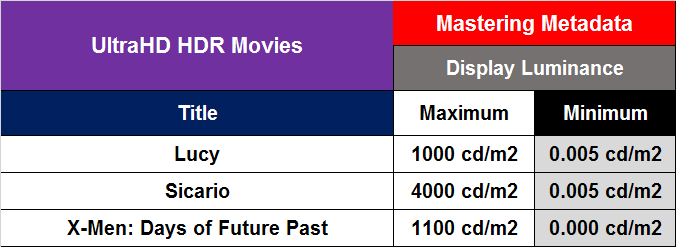Hinomura Krycek
Bayofilo
O recortas o estiras y deformas la imagen, no hay otra.


 " and nobody knows the answer to that question yet. Anyway... if you have a means of measuring your projector and have a UHD/HDR pattern source, see what you measure for 50% white in HDR10 mode. Then see what you measure for peak white or 100% white... if those two numbers are pretty close, you won't exactly clip, but you will squeeze a LOT of code values down to very few code values so even if tone mapping is properly implemented on your projector, there simply may not be enough "space" above 50% white/100 nits/code value 509 for your projector to do much with all the code values from 510 and up.
" and nobody knows the answer to that question yet. Anyway... if you have a means of measuring your projector and have a UHD/HDR pattern source, see what you measure for 50% white in HDR10 mode. Then see what you measure for peak white or 100% white... if those two numbers are pretty close, you won't exactly clip, but you will squeeze a LOT of code values down to very few code values so even if tone mapping is properly implemented on your projector, there simply may not be enough "space" above 50% white/100 nits/code value 509 for your projector to do much with all the code values from 510 and up.


Ese pedazo de título.Hoy es un gran día!

No hagas zooooom por dios jajaja.Ese pedazo de título.
Yo también lo he recibido. En un rato me pongo a verlo.
A disfrutarlo!!!!!
Parece ser que la gente esta muy contenta , excepto algunos que han tenido algún susto de pixelación según en el foro vecino . Esperamos vuestras impresiones. Aqui dejo una review Blade Runner: The Final Cut Ultra HD Review - AVSForum.comHoy es un gran día!



